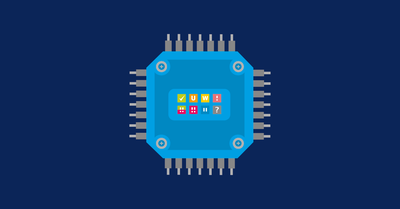

- WINDOWS MEMORY MONITORING TOOL CODE
- WINDOWS MEMORY MONITORING TOOL FREE
- WINDOWS MEMORY MONITORING TOOL WINDOWS
The following commands provide detailed information about the VM/node’s memory and processors.ĭ) CPU and Memory utilization of a particular process. The above screenshot shows that there are four CPUs (Cpu0, Cpu1, Cpu2, Cpu3) and their utilization statistics. Hitting “1” on the Keyboard, when top is running will show all the available CPUs and the utilization of each CPU. This command provides CPU and memory utilization.
WINDOWS MEMORY MONITORING TOOL FREE
This command provides the total free and used memory information of your VM/node. Basic Linux Commands to Monitor Memory and CPU I would want to keep this article as simple and unique as possible and do not want to duplicate the work and effort of my fellow technical comrades. Still, we'll provide appropriate links to documentation and articles, which will have more information about a particular topic. Note: Since this article will be touching base on most of the monitoring techniques, we will try to be precise in illustrating them. We will be using JVisualVM extensively to demo memory and CPU monitoring.
WINDOWS MEMORY MONITORING TOOL CODE
I believe, a Java developer should leverage some of these techniques to fine-tune the code and set the right JVM parameters, while taking the code, all the way from development to production. I will be providing details about the nuances of these tools and when and how they could be used. PROCESS_MEMORY_COUNTERS_EX.This article talks about the basic commands, tools, and techniques to monitor JVM’s Memory and CPU.

Thread Count (Process() for the specified image) For the System process, Page File Bytes is always 0. VM Size for all processes except the System process. PagefileUsageĬommit Size for all processes except the System process.
WINDOWS MEMORY MONITORING TOOL WINDOWS
Task Manager Processes tab for Windows Server 2003 and Windows XP Task Manager Processes tab for Windows Server 2008 and Windows Vista The following table associates process object performance counters with the data returned by the memory performance functions in the MEMORYSTATUSEX, PERFORMANCE_INFORMATION, and PROCESS_MEMORY_COUNTERS_EX structures, and with the corresponding information displayed by Task Manager. Windows Server 2003 and Windows XP: Except for Cache Bytes, these performance counters are not supported. Windows Server 2003 and Windows XP: This performance counter is not supported.Ĭache Bytes + Sharable pages on the standby and modified listsĬache Bytes + Modified Page List Bytes + Standby Cache Reserve Bytes + Standby Cache Normal Priority Bytes + Standby Cache Code Bytes ullTotalPageFile and PERFORMANCE_INFORMATION. ullTotalPhys and PERFORMANCE_INFORMATION. Subtract usage value shown in Memory graph from Physical Memory (MB): Total ullAvailPhys and PERFORMANCE_INFORMATION. Task Manager Performance tab for Windows Server 2003 and Windows XP Task Manager Performance tab for Windows Server 2008 and Windows Vista Memory object counter (unless otherwise noted) The following table associates memory object performance counters with the data returned by the memory performance functions in the MEMORYSTATUSEX, PERFORMANCE_INFORMATION, and PROCESS_MEMORY_COUNTERS_EX structures, and with the corresponding information displayed by Task Manager. This topic associates performance counters with the data returned by memory performance functions and the Windows Task Manager: Applications such as the Windows Task Manager, the Reliability and Performance Monitor, and the Process Explorer tool use performance counters to display memory information for the system and for individual processes. Memory performance information is available from the memory manager through the system performance counters and through functions such as GetPerformanceInfo, GetProcessMemoryInfo, and GlobalMemoryStatusEx.


 0 kommentar(er)
0 kommentar(er)
